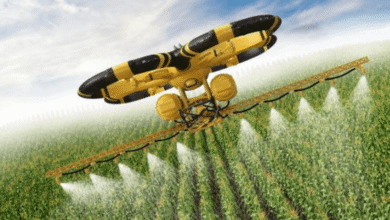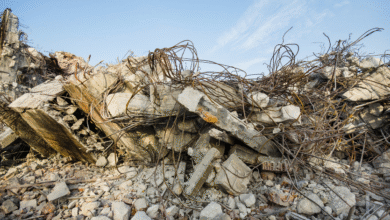From Static Registers to Dynamic Risk Intelligence: How Silica Dust Monitoring is Reshaping Risk Register Software in Australia

Industries such as construction, quarrying, tunnelling, and engineered stone manufacturing are grappling with a hidden, yet very real, danger — respirable crystalline silica (RCS). Due to the rising rates of silicosis being diagnosed and stricter workplace exposure limits set by Safe Work Australia, managing risks in this area is now far more urgent and sophisticated than mere compliance; it requires proactive strategies grounded in data.
In the midst of this change, there’s an unexpected champion: Risk Register software. These platforms are evolving well beyond their initial purpose of logging risks and assigning ownership. They are increasingly being used as critical centralized systems, including for environmental and health monitoring (and even air monitoring for silica dust).
But here’s the change: Risk registers are no longer mere spreadsheets or passive repositories. In bold Australian organizations, they are evolving into real-time, proactive, intelligent systems that integrate data on exposures, issue alerts, enforce compliance, drive WHS and ESG reporting, and even self-generate compliance documentation. Nowhere is this more visible than in the management of airborne silica dust exposure risks.
Leaving Behind Risk Register Realities
The old way of dealing with silica dust exposure in risk registers involved rote and repetitive risk management procedures: listing control measures such as wet cutting and PPE, and assigning review dates. This static and hazardous approach is outdated.
Modern-day risk register software needs to integrate quantitative information, like results from air-monitoring campaigns, to show risk exposure in real life. For instance:
Direct upload of time-stamped exposure measurements of silica to the risk register.
Automatic downgrading of risk exposure assessments when the limit is less than the Safe Work Australia’s TWA of 0.05 mg/m³.
Risk exposure assessment downgrading without justification should be prohibited.
This change makes the risk register a dynamic system. Adaptive real-time information updates replace static workplace risk assessments, moving beyond theoretical risks.
Collaboration Between OHS, Compliance, and Hygiene Teams
Many Australian workplaces suffer from a key governance gap whereby hygiene information is separated from the risk register. The air monitoring data for silica dust is stored in a consultant’s PDF report and kept in a hygiene file separated from WHS or the corporate risk register.
Smart Risk Register software is assisting to resolve this gap. The system’s capability to allow direct upload of hygiene sampling data offers the following capabilities:
Flagging elevated exposure results for immediate examination.
Associating composite samples to their respective tasks, workers, or locations.
Executing automatic mandates like retraining, control reassessment, or referrals for medical review.
You get improved protection for the workers and enhancing legal defensibility at the same time. If asked by the regulator about the silica exposure, you will have the entire chain of evidence, from monitoring through to mitigation.
See also: Editing for Narrative Storytelling: Tools and Techniques
Taking Action Instead of Just Documenting
Lifesaving action is more important than life saving documentation. A modern risk register is evolving to enforce action tracking as documented in the register and will consequently enforce action tracking as well.
Notifications and alerts to supervisors and safety representatives.
Schedule follow up sampling or validation of the control to ensure it is functioning as intended.
If the risks are not resolved by a given deadline escalate the issue to leadership.
This feature turns risk registers from passive libraries and transforms them into proactive risk management tools. It also aligns with the ISO 45001 perpetual improvement and proactive responsive safety systems, which, for example, regulators from NSW and QLD are increasingly trying to enforce for high-risk industries.
The Compliance + ESG Advantage
Integrated monitoring for silica in the air, as well as WHS compliance, modern risk registers assists some australian companies with the breaching of ESG or Environmental, Social and governance expectations. Silica, a carcinogenic dust, makes the concentration in the air not just a safety issue, but a social responsibility and reputational risk.
Incorporating silica monitoring data into risk registers that support ESG reports allows businesses to:
– Active exposure management and transparency.
– Promote social impact KPI and investor alignment.
– Provide data to substantiate claims regarding a “safety-first culture.”
This operational and strategic compliance “two-for-one” is transforming Risk Register software from a mere compliance tool to one of strategic compliance and credibility.
Silica Risks Are Not One-Size-Fits-All: Customization is Key
Businesses in Australia from small subcontractors in Victoria to large quarry operators in WA vary greatly. Generic silica risk software often leaves a lot to be desired and fails to address silica dust management’s more nuanced aspects.
Silica Risk Register software should enable:
– Risk registers defined at the site level.
– Attachment of exposure reports, photographs, and laboratory certificates.
– Integration with mobile hygiene monitoring applications or devices.
– Custom escalation workflows based on the severity of exposure.
This level of configurability ensures that the software supports and adapts to real working conditions, not the other way around.
Conclusion: Modernizing Mentality of Risk Register
Risk Register software in Australia goes beyond fulfilling auditor needs. It now protects lives, reduces risks, and builds intelligence in organizations. In light of the growing silica dust crisis, treating risk registers as mere compliance checkboxes is no longer sustainable from a legal and moral standpoint.
Organizations that invest in air monitoring for silica dust, automate responses, connect risk data to strategy, and mitigate risks in real-time will protect their workers and build smarter and more trusted organizations.
The register should no longer be treated as a mere record. It is now a system to respond. Treat it that way.




